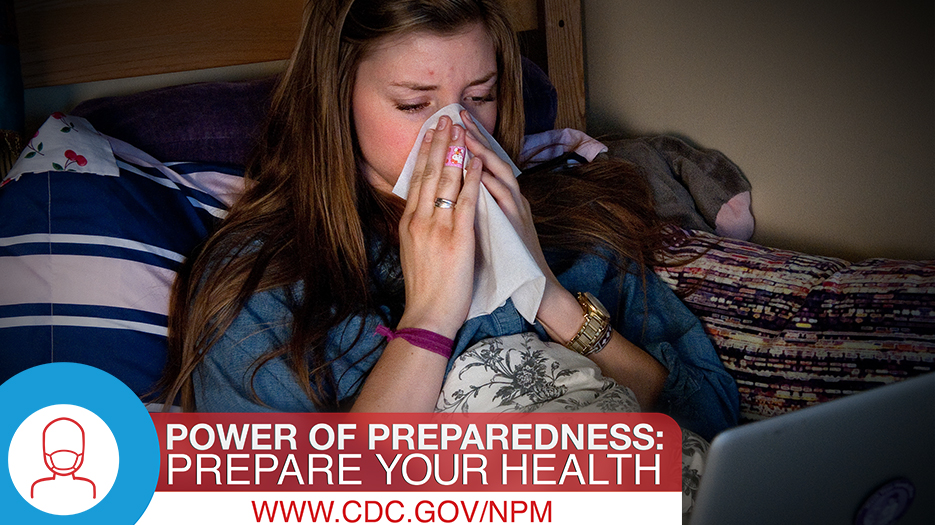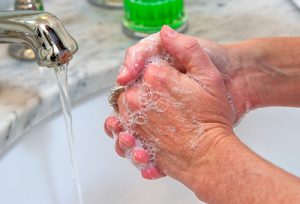Personal Protective Actions You Can Take in a Flu Pandemic
Posted on by
Every fall and winter the United States experiences epidemics of seasonal influenza (flu). Sometimes a flu pandemic occurs due to a new flu virus that spreads and causes illnesses around the world. We cannot predict when a flu pandemic will occur, but over the past 100 years, we have documented four flu pandemics resulting in close to 1 million deaths in the United States alone. 1
When a flu pandemic happens, it can take up to 6 months before a vaccine against a new flu virus is available. Antiviral drugs can help manage the symptoms of the flu, shorten the time you are sick by 1 or 2 days, and prevent serious flu complications, like pneumonia. But, there may be a limited supply of these medications during a pandemic so nonpharmaceutical interventions (or NPIs) may be the only prevention tools available during the early stages of a pandemic.
There are things you can do, apart from getting vaccinated and taking medications, to help slow the spread of a flu pandemic. NPIs, also known as “community mitigation measures,” are important because they will be the first line of defense in the absence of a pandemic vaccine. NPIs may be more effective when used early and in a layered approach (i.e., using more than one measure at a time). During the 1918 pandemic, cities that put NPIs in place quickly reported fewer deaths.2,3 NPIs may be used in different settings, including homes, schools, workplaces, and places where people gather (e.g., parks, theaters, and sports arenas).
Personal protective measures to prevent flu at all times
 CDC recommends using some NPIs to prevent seasonal flu and other respiratory infections. To help prevent the flu, you should always:
CDC recommends using some NPIs to prevent seasonal flu and other respiratory infections. To help prevent the flu, you should always:
- Stay home when sick and away from others as much as possible,
- Stay away from people who are sick as much as possible,
- Cover your coughs and sneezes with a tissue,
- Wash your hands often with soap and water,
- Avoid touching your eyes, nose, or mouth, and
- Regularly clean surfaces and objects that you use a lot.
Personal protective measures to prevent flu during a pandemic
Many of these NPIs would still be recommended during a pandemic, but some would be reserved for use during a flu pandemic. Depending on the severity of a pandemic, CDC might recommend:
- Stay home if exposed to a sick household member,
- Use a face mask when sick and out in crowded community settings, and
- Implement community measures to reduce exposure to pandemic flu (coordinating school closures, limiting face-to-face contact in workplaces, and postponing or canceling mass gatherings).
CDC is preparing for a flu pandemic
There is always a threat that a flu pandemic will arise, so CDC is taking steps to prepare. In 2017, CDC issued updated community mitigation guidelines to help state and local public health departments and their community partners make plans before the next pandemic happens. Visit www.cdc.gov/npi to access the updated guidelines; plain-language planning guides for the general public and community settings; and additional NPI communication, education, and training materials. You can find more information about seasonal and pandemic flu at www.cdc.gov/flu and at www.cdc.gov/flu/pandemic.
Footnotes:
1 Past Pandemics: https://www.cdc.gov/flu/pandemic-resources/basics/past-pandemics.html
2 Hatchett RJ, Mecher CE, Lipsitch M. Public health interventions and epidemic intensity during the 1918 influenza pandemic. Proc Natl Acad Sci U S A. 2007; 104:7582-7.
3 Markel H, Lipman HB, Navarro JA, et al. Nonpharmaceutical interventions implemented by US cities during the 1918–1919 influenza pandemic. JAMA. 2007; 298:644-54.
Posted on by

